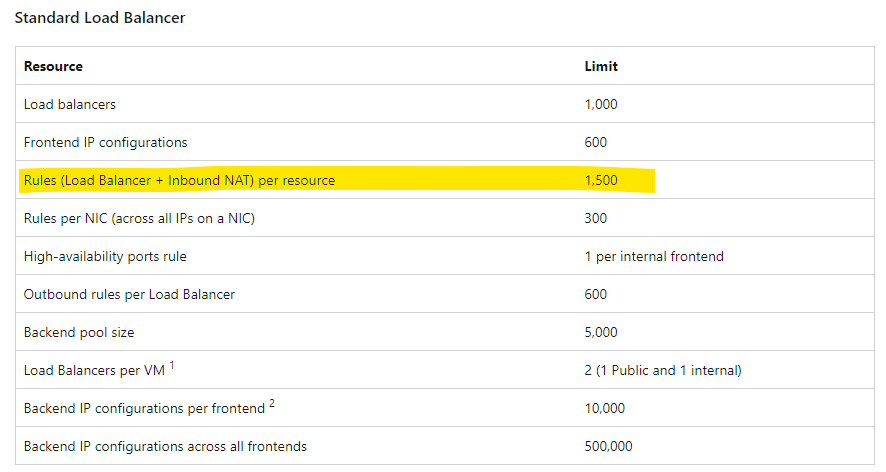Hello @Chavan, Suryakant
As per your question regarding Load balancing rule, here I am sending you the detailed answer-
Azure Standard Public Load Balancer supports the following load balancing rules:
1. Basic load balancing rule: This type of rule is used to distribute traffic evenly across a group of healthy instances in a backend pool.
2. Session affinity rule: This type of rule is used to maintain affinity between a client and a specific instance in a backend pool. This can be useful when the client needs to maintain a session with a specific instance, such as in the case of a web application that uses in-memory sessions.
3. Performance-based rule: This type of rule is used to distribute traffic based on the performance of the instances in a backend pool. Traffic is directed to the instances with the lowest average response time.
4. Priority rule: This type of rule is used to assign priorities to different rules, so that traffic is directed to the backend pool with the highest-priority rule that is currently available.
5. Weighted rule: This type of rule is used to distribute traffic based on weights assigned to different instances in a backend pool. The traffic is directed to the instances in proportion to their weights.
In total, Azure Standard Public Load Balancer supports up to 100 load balancing rules.
Here are some examples of how the different types of load balancing rules can be used:
1. Basic load balancing rule: Suppose you have a group of web servers running in an Azure Virtual Machine Scale Set, and you want to distribute incoming traffic evenly across all of the servers. You can create a basic load balancing rule to distribute traffic based on the request protocol and port number, such as HTTP on port 80.
2. Session affinity rule: Suppose you have a web application that uses in-memory sessions to store user data, and you want to ensure that each user's requests are sent to the same server for the duration of their session. You can create a session affinity rule that uses a cookie-based affinity to maintain the session affinity between the client and the server.
3. Performance-based rule: Suppose you have a group of servers running a web application, and you want to direct traffic to the servers with the lowest average response time. You can create a performance-based rule to distribute traffic based on the performance of the servers.
4. Priority rule: Suppose you have multiple load balancing rules that you want to apply to incoming traffic, but you want to give certain rules priority over others. You can create a priority rule to specify the order in which the rules should be applied.
5. Weighted rule: Suppose you have a group of servers running a web application, and you want to direct more traffic to some servers than others. You can create a weighted rule to assign different weights to the servers, and the traffic will be directed to the servers in proportion to their weights.
I hope these examples help to clarify how the different types of load balancing rules can be used! Let me know if you have any other questions.

